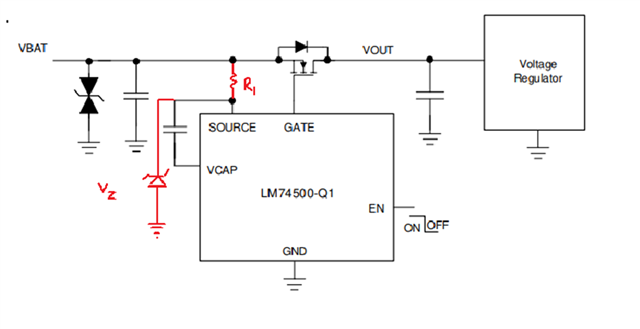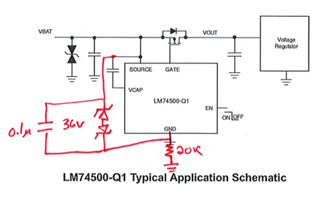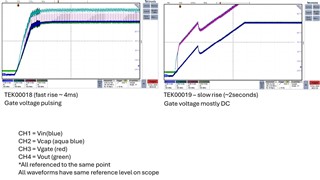Tool/software:
You didn't really answer the question I asked regarding adding a resister in the gnd lead to float the device. I've taken care of downstream devices another way since I can't disconnect during a surge and must operated through it. This chip is only for reverse voltage. I'm having problems with this LM74500-Q1 controller at lower voltages (20V) and I believe it is because I have a 51K resistor from the chip gnd to gnd to float this. I need to speak to someone familiar this chip. In the datasheet there is a figure 7-2 which shows a huge spike in quiescent current at ~ 2 - 5V Vsource voltage. I think this 650uA spike may be causing a start up problem since I have a large resistor in the ground lead to float the chip. I need to understand if figure 7-2 is with the enable high or not? If I delay my enable instead of tying to Vsource can I reduce huge 650uA current spike at startup? Is there someone I could work with quickly on this?
Regards,
Jeremy





